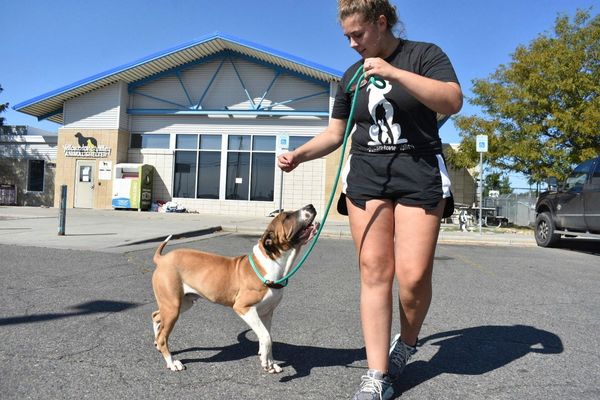
For fun, I recently went on Amazon in the hunt for the cheapest camera available and came across the colorful model in the image above. It looks like it can do what most kids' cameras can and for a fraction of the cost – an unbelievable $9.99 in the US or £14.99 in the UK at the time of writing.
This is the latest in a regular series of articles in which we test really cheap gadgets to see if they're worth even the small price you'll pay for them. Read them all here.
It scores an average of 3.8 stars, but we should all know by now to take reviews posted on the online megastore with a pinch of salt. That said, the non-brand low-cost snapper can shoot 5MP photos and full HD videos, plus it has a 2.4-inch screen, rechargeable 800mAh battery (charged via micro USB), and five games to play. You even get a 32GB micro SD card chucked in, and yes, all for under $10 / £15. What is there to lose?
I hit purchase for this stocking-filler candidate, and it was on my doorstep with free next-day delivery using my Amazon Prime membership. It was time for the fun to begin... “Kids! Something arrived in the post for you, come take a look.”
It’s cheap, but is it good?
Sometimes cheap gear exceeds expectations, which is a solid reason why TechRadar runs this $20 challenge series. And I’ll say this from the off – many pricier options found in our best kids camera guide cost closer to $100 / £100, such as the MyFirst Camera 3, but they’re not 10x better than this camcorder-style snapper.
In fact, look past the fancy exteriors and product marketing that come with pricier branded kids cameras and they're often no more technically capable than cheaper competitors. Most use the same cheap-to-produce image sensor that's typically found in security cameras and the best bird feeder cameras and yes, kids' cameras. Is that the case here?
I briefed my kids that I needed their honest opinions and probed for their first impressions. Their response? “It’s OK.” If you speak my kids' language you know that OK is far from an endorsement.
Before even getting to taking pictures, they notice the flip-out screen isn’t touch-sensitive. Any screen that doesn’t respond to touch is a peculiarity to kids under the age of 10. Just to be clear, I absolutely wouldn’t expect a sub-$10 camera to have a touchscreen, so this isn't a dealbreaker here.




Their next observation is that the screen is fixed in its flip-out position and doesn’t spin around for selfies, and there’s only the front-facing lens. They’ve played with the MyFirst Camera 3 before, which has a rear-facing camera for selfies, and its button placement next to the screen is easier to find, too. If you want selfies with this camera, you're shooting them blind.
Once they get past the fact that they need to operate the camera using awkwardly placed buttons, they get to taking pictures. Only we’re inside and it’s night, so the picture quality is awful. We’ll need to wait until it's daylight and maybe go out in the garden. Mind you, other kids' cameras we’ve used before suffer the same pitfalls in low light.
Later in the week, we pack the camera when out for a drive and stop to take a picture or two at a local beauty spot. Picture quality in good light is no better – the lens is soft, and the dynamic range is super limited with blown-out highlights or dark shadows.
It’s got games – but is that a good thing?
Once my kids realize the images appearing on-screen don’t do justice to what they see before them (or the quality they can get from my old smartphone), and have quickly exhausted the six filter effects and three modes (that's as specific as it gets – the modes turn out to be filter effects, including mirror), the sub-$10 snapper is at risk of a life of obscurity. A forgotten gadget. That is, until they discover there are games.
OK, I kind of misled you there with the story arc. The games icon was essentially their first discovery, and before they took any photos or videos, they asked to check out what games were on board. I quickly put them back on track with the art of photography for the sake of this feature.



There are five puzzle games, controlled by those awkward buttons (the screen isn't touch sensitive, remember). I discovered my seven-year-old playing those old-school Tetris-era ames most nights for a week instead of sleeping. This wasn’t a camera to her, it was a handheld games console.
And that’s more to the pity. She used the camera more because it had games, not because she could take great photos with it and have fun with photography. I didn’t expect it to be her carry-everywhere camera, but still.
More to the point, if I want my kids to get into photography, they’re more likely to do so with a camera that costs me absolutely nothing and has inherently better quality.
What’s better than cheap? Free, of course!
I have three kids under the age of eleven, and despite the comprehensive array of cameras that I own, plus those that visit our house as part of my job being TechRadar’s cameras editor – kids cameras, the best compact cameras, cheap cameras, beginner cameras, mirrorless and DSLRs – the one they use the most and are most comfortable with is on a smartphone.
That should come as no surprise. So rather than buying a dedicated camera, no matter how cheap it is, a smartphone is potentially a better option and will hold their attention the longest. I'm at risk of contradicting myself as an advocate for dedicated cameras over smartphones regarding the impact on mental health, but I’m merely talking about the camera itself and not all the apps and games and the internet it comes with.
I have an old stripped-back Google Pixel 3a – no apps, no SIM card, no data – and to my children it’s simply a camera with front and rear-facing cameras and the computational smarts to boost low light image quality and make soft background portraits. There’s a camera app with shooting modes, and the photos can be easily seen and enjoyed together.
I’ve long moved on from that phone to my latest handset, so, technically, my old phone is free to them, and they're more likely to use it just for photography and video than a cheap kids' camera.




The sub-$10 / £15 kids camera in question here exceeded my expectations. It does what most kids' cameras do for a fraction of the cost, even if its screen and all-round handling are a big letdown. But it still cost me something. It was bought new, and that throw-away culture has an environmental cost when all along I could’ve just recycled an old phone.
If you’re not sold on the idea of giving your child an old phone, then this low-cost camcorder-style compact is ludicrously cheap and indeed stocking-filler material. Just don’t expect it to hold their attention for long.







